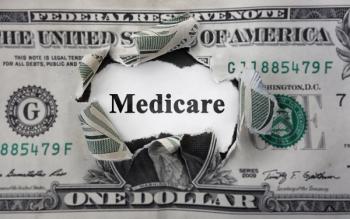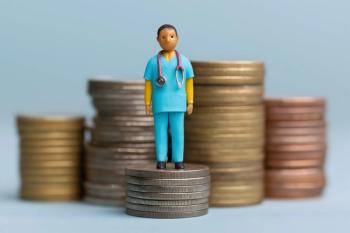
- Medical Economics December 2022
- Volume 99
- Issue 12
Why Richard Nixon’s ghost is haunting CMS
Understanding the cuts to physician reimbursement
In August 1971, ostensibly in response to out-of-control inflation, then-President Nixon announced that economy-wide wage and price controls would take place after the 1972 election. This was the result, according to the Washington Examiner in 2011:
By the time Nixon reimposed a temporary freeze in June 1973, Daniel Yergin and Joseph Stanislaw explain in “The Commanding Heights: The Battle for the World Economy,” it was obvious that price controls didn’t work. ...
Occasionally, though, we learn something from our mistakes. As (Secretary of the Treasury) Shultz told Nixon in 1973, at least the debacle had convinced everyone “that wage-price controls are not the answer.”
We did not learn.
For at least 60 years, the United States has been in the throes of handwringing over ever-increasing costs for medical care. A multitude of remedies have been suggested, and a multitude of laws with snappy-sounding titles have been passed. These efforts have been ineffective, with inflation-adjusted health spending growing at a 5.5% rate between 1960 and 2013 while the gross domestic product grew at a 3.1% rate, according to the U.S. Centers for Medicare & Medicaid Services. This corresponds to a per capita spending increase from $147 per person to $9,255 per person, an average growth rate of 8.1%.
There are several components to the problem: hospitals and other medical businesses, administrative costs, insurance companies, pharmaceutical companies, and of course physicians. (This article cannot exhaustively review the contributions of all five constituencies but will focus on contrasting what savings opportunities there may be with physician reimbursement vs. hospital reimbursement.) The other four participants in this scramble for cash have been quite adept at deflecting attention away from themselves and toward the one for whom there is perhaps the least potential for savings — physicians.
The “solution” the federal government instituted was Nixon-style wage and price controls on the health care sector, gradually ratcheting down payments for the past 30 years.Predictably, the controls have produced shortages in the area most targeted, primary care, where we are experiencing a deepening crisis.
This year’s discussion follows the script we have seen for many years: CMS is proposing draconian cuts of 4.5% in Medicare payments for physician work, while increasing payments to hospitals by 4.3%.
Further cuts in physician reimbursement will not cure runaway medical costs but will compromise the quality of care
As a thought experiment, consider what would happen if we “saved” all physician fees by cutting reimbursement to zero. It would mean a savings to the system of about 10%, which would be invisible after two years, given the overall medical inflation rate of 6.5%. The cost of this 10% savings, though, would be the total loss of physician services, which is obviously untenable.
No one proposes cutting reimbursement to zero, but CMS is tiptoeing up to a line with its annual cuts. Between 100% cuts and 5% cuts, there is a tipping point — a point at which physicians will begin leaving in droves, and simultaneously students will recognize they can’t possibly make a decent living in medicine. They will exercise their other options, starving the system of the new physicians we need.
To understand the impact of these continued cuts on individual physicians, we must examine what has happened to individual physician reimbursement. Although a recent American Medical Association publication documented an 11% increase in physician costs to the system over the past 20 years, this is a total cost: the cost of all physicians in the system. In that time, the number of physicians has increased by 43%, resulting in a decrease in per physician reimbursement of 23%. This is worsened by the fact that now more than 50% of physicians are employed, according to AMA data. Their employers of course collect the money categorized as “physician reimbursement” and take more than 20% of collections for themselves, further reducing the physician’s take-home pay. Adding to the damage is the fact that the Consumer Price Index has risen by 50% during this period. Most wages have increased at a comparable rate, but not physician pay — it has been decreasing. At the same time, there is the swelling student debt load that physicians must take on.
There are in fact alarming signs we have already passed the tipping point. A survey of physicians indicated that one in five intends to leave practice in two years, and one in three says they will reduce their work hours in the next year, according to a study in Mayo Clinic Proceedings. In a situation in which it is recognized we have a serious shortage of physicians, retaining physicians already in place would be an economical and immediate response to the problem. Yet the continued downward pressure on physician reimbursement is driving physicians away.
Talented students considering medicine as a career will look at these trends — increasing debt and decreasing reimbursement — and be realistically concerned about whether they will be able to pay off the debt.
Physician expertise is necessary to minimize the costs to the system
What we in medicine understand but the non-physicians directing payment cuts do not, is that the cost of the physician is small compared with the cost of services ordered for patients. Diagnostic imaging stands as a good example. Nurse practitioners get absolutely no training either in interpretation or appropriate ordering of imaging exams. Nevertheless, in many environments, they are empowered to order these expensive tests. A physician who avoids one unnecessary CT scan or MRI scan a day has more than covered the difference between the physician pay and the non-physician practitioner pay for that day. And that is only imaging. The system must have experts directing diagnostic testing and treatment plans.
This was proved in findings from a study conducted at Hattiesburg Clinic. They have now defined the economic consequences of allowing inexpert NPPs to direct care. Unsupervised NPPs ordering tests and referrals were found to cost the clinic $10.4 million per year. It is important to recognize that the Hattiesburg Clinic is an accountable care-type organization. As such, unnecessary testing is an actual loss to the business. They were therefore motivated to track their costs and control them. We will not see a similar study coming from a fee-for-service hospital because there is no motivation to control over-ordering.
The Hattiesburg experience recapitulates the findings of a Mayo Clinic paper. NPPs were empowered to request specialty consultations and 59% of such consultations were found to be unnecessary: a waste of time and money.
None of this is surprising to those who work in the system. We know those who are untrained cannot be expected to order tests and consultations correctly. We know they have not been trained to construct a differential diagnosis. Without that training, it is impossible to design testing and treatment plans.
If not through physician reimbursement, where can economies be found?
Costs for inpatient and outpatient hospital care have gone up more than 60% in the past 20 years. Let us take an example: the finances of one of the nation’s 417 hospital systems.
OhioHealth owns 12 of the nation’s 6,093 hospitals. It is one of the top 18 systems in terms of Moody’s bond ratings. As such, it is somewhat of an outlier, but it is still instructive to examine.
The amount of cash this system has amassed is truly breathtaking, as is the increase in the past 5 years. In 2017, the reserve fund was $3.6 billion, and in 2022 it had increased to $6.7 billion. This is during a period in which the system built one hospital and bought another, and suffered setbacks due to the pandemic. Yet its cash reserves still nearly doubled in 5 years. For context, OhioHealth’s cash reserves are greater than the gross domestic product of 55 of the world’s nations. And this is only one of 417 systems in the United States.
How has our government responded to this? In 2020 and 2021, OhioHealth received a pandemic bailout of $209 million. CMS had proposed a 3.2% increase in Medicare payments to hospitals for next year, but this was increased further and now is scheduled to be 4.3%.
Just like the Nixonian wage and price controls, the controls on the medical economy introduced by the central planning agency, CMS, have produced serious distortions in the economy. Those delivering care who have less political power are gradually being forced out of the market, while some institutions, with more political power, have become rich.
There is another interesting parallel to the Nixon economics. Nixon actually didn’t think the cuts would change the economy. His true intent was to look like he was doing something, for political impact. It is clear that now there is also an overriding political expediency factor allowing the targeting of physicians while shielding the other four sectors. Politicians create the appearance of doing something, while protecting their campaign contributors.
This conclusion is clear: After years of cuts to physician reimbursement, there is no room left for further cuts without pushing the entire medical profession over a cliff.
Phillip Shaffer, M.D., graduated from The Ohio State University with a BS in chemistry degree, and went on to medical school at the University of Toledo College of Medicine and Life Sciences. He completed radiology residency and a nuclear medicine fellowship at Ohio State.
Articles in this issue
almost 3 years ago
How to select a practice locationalmost 3 years ago
Physician estate planning guidealmost 3 years ago
Five Signs the Market May Be Heading for a Sustained Uptrendalmost 3 years ago
Fallout from the FTX bankruptcy and the future of cryptoalmost 3 years ago
Who will provide primary care?almost 3 years ago
Seven ways to ease patient collections in your medical practicealmost 3 years ago
How physician documentation can combat the opioid crisisabout 3 years ago
Why improving communication can reduce physician burnoutabout 3 years ago
Fixing medical care: The pride of ownershipNewsletter
Stay informed and empowered with Medical Economics enewsletter, delivering expert insights, financial strategies, practice management tips and technology trends — tailored for today’s physicians.



















